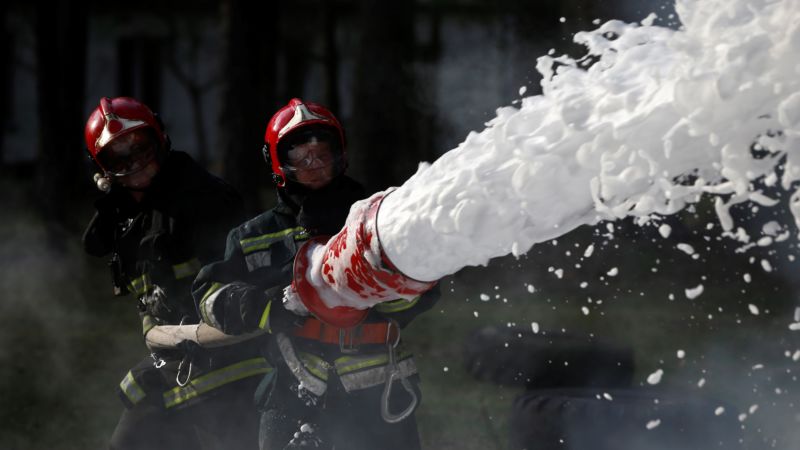Firefighting foam has been used since the 1950s. The foam is known as aqueous film-forming foam and is abbreviated as AFFF. Firefighting foams contain synthetic chemicals referred to as PFAS that may pose serious health risks. The two specific chemicals contained in the foam are still being used in some areas. The chemicals are polyfluoroalkyl and perfluoroalkyl, often shortened to PFAS. If you or a loved one has been exposed to an AFFF product, even only for training purposes, you may be able to seek compensation. PFAS may cause firefighters to develop bladder cancer, kidney cancer, lymphoma, leukemia, pancreatic cancer, prostate cancer, and testicular cancer.
Firefighting Foam & Cancer
Chemical-based firefighting foam has been sold for decades because of its effectiveness in extinguishing jet fuel and petroleum fires. However, it may cause kidney, testicular, and pancreatic cancer in firefighters who were regularly exposed to the foam. At particular risk are U.S. military firefighters, as the military widely used the foam for approximately 60 years. Firefighters assigned to airports are also at risk because airports required the use of the foam until 2018.
If you or a loved one are a firefighter, were exposed to this foam, and later developed kidney, testicular, or pancreatic cancer, you may be entitled to compensation through a firefighter foam lawsuit.
What is Firefighting Foam?
Known officially as aqueous film-forming foam (AFFF), firefighting foam creates a blanket that cuts off the fuel from the oxygen it needs to burn. To help smother the fire, chemicals known as Perfluoroalkyl and polyfluoroalkyl substances (PFAS) were, and, in some circumstances, are still used.
Major health organizations like The Centers for Disease Control and Prevention (CDC), United States Environmental Protection Agency (EPA), and the American Cancer Society (ACS) have noted that certain PFAS may be linked to cancer in firefighters. In fact, the EPA has classified PFAS as “emerging contaminants,” meaning they are likely dangerous to human health.
Cancers associated with PFAS include:
- Bladder Cancer
- Kidney Cancer
- Lymphoma
- Leukemia
- Pancreatic Cancer
- Prostate Cancer
- Testicular Cancer
The highly durable nature of PFAS means they do not break down over time. Because of this, it may remain in the body for years.
High-Risk Occupations
Those who served as airport or military firefighters are at particularly high risk of PFAS exposure. Until 2018, the Federal Airport Administration (FAA) required airports to use PFAS-containing foam following U.S. Navy guidelines.
The U.S. Navy and other branches of the military have used firefighting foam since the 1960s, even during training exercises and non-critical missions. It was particularly favored since it could put out jet fuel fires. The military is currently phasing out the use of certain PFAS.
File a Firefighter Foam Lawsuit
The firefighting foam lawyers at Gacovino, Lake & Associates are currently investigating cases involving kidney, testicular, and pancreatic cancer after occupational exposure to firefighting foam.
If you or a loved one are a firefighter, have been exposed to these foams, and later diagnosed with kidney, testicular, bladder, prostate or pancreatic cancer, or lymphoma or leukemia, you may wish to file an AFFF foam lawsuit against companies that made firefighting foam. You may be able to receive financial compensation for your injuries.
To learn more, contact the firefighting foam attorneys at Gacovino, Lake & Associates, P.C. today. We will listen to your story and help you understand your options.
